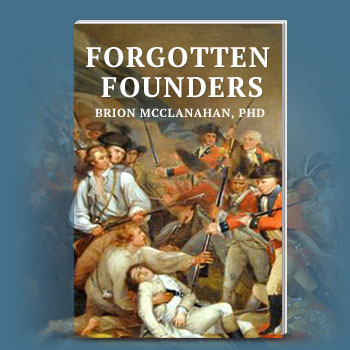With the confirmation hearings of Sonia Sotomayor, the Supreme Court has again taken center stage in American politics. We have heard about her “wise Latina” comment and her positions on abortion and gay marriage, and it seems that these are the central issues in the debate; however, the question the Senate Judiciary Committee should be asking is would Sotomayor, as a member of the Supreme Court, follow the guidelines established by the founding generation in relation to court power? If not, and it is obvious she will be confirmed, what can Americans do about a court bent on “legislating from the bench?” It seems Americans need a little history lesson about the original intent of the Supreme Court.
The idea of an “elastic” Constitution and “legislating from the bench” originated in the founding generation. The disheveled and lazy socialite, John Marshall of Virginia, provided the intellectual basis of judicial activism when, in the 1803 Marbury v. Madison decision as Chief Justice of the Supreme Court, he lectured President Thomas Jefferson on Supreme Court jurisdiction. Marshall stated that “it is emphatically the province and duty of the judicial department to say what the law is” and ultimately decide on the constitutionality of legislation.
What most Americans don’t realize is that “Judicial review,” as it has since been called, is not an enumerated power of the Supreme Court. You won’t find those words in the Constitution. Certainly, many members of the founding generation believed the Court would, as a co-equal branch of government, ultimately be able to check legislative and executive authority through its appellate jurisdiction, but that pertained only to federal law. Marshall himself argued during the 1788 Virginia Ratifying Convention that the Supreme Court could only rule on federal law, not state statutes. This was an attempt to appease Anti-Federalists who warned that the Supreme Court would run roughshod over civil liberties and the other branches of government. Marshall, of course, was being disingenuous. Many of his later rulings smacked down state sovereignty and enlarged the power of the Supreme Court. But Marshall was the exception rather than the rule in the founding generation in relation to the interpretation of Supreme Court powers. The members of his Court certainly agreed with him, but not everyone was convinced.
Jefferson wrote later in life that the “judicial review” was simply the opinion of John Marshall, and not the original intent of the framers of the Constitution. In fact, he said in 1815 that, “The question whether the judges are invested with exclusive authority to decide on the constitutionality of a law has been heretofore a subject of consideration with me in the exercise of official duties. Certainly there is not a word in the Constitution which has given that power to them more than to the Executive or Legislative branches.” In 1798, Jefferson and his lieutenant James Madison secretly authored the Virginia and Kentucky Resolves to protest the unconstitutional Sedition Act of 1798. These resolves outlined the doctrine of state interposition, better known as nullification. In essence, the states, acting in their sovereign capacity, could declare a federal law unconstitutional and refuse to adhere to its provisions. This was certainly a measure of last resort, but Northern members of the founding generation believed in it enough to invoke nullification during the 1815 Hartford Convention, a protest of the War of 1812 and the Madison administration. Nullification worked in 1798 but with the end of the War of 1812, Northern Federalist participants in the Hartford Convention were discredited, called unpatriotic, and for a time, disappeared as a political force. Still, the question of “judicial review” appeared unsettled.
Of course, the Constitution provided a way to rid the American polity of aggressive judges. Federal judicial appointees are subject to impeachment, and the Republicans who controlled the Congress in 1804 tried to make an example of Supreme Court Justice Samuel Chase. The House of Representatives impeached him for partisan political attacks from the bench, but the Senate found him not guilty. Before the final verdict, Marshall was genuinely scared that he would be next on the chopping block, but once it became clear that the power of impeachment would be stripped of its teeth, the Marshall court went on a political rampage for the next thirty years. Jefferson again said that he thought both houses of Congress should simply remove the whole bunch. George Washington thought that only unconstitutional legislation should be subject to an executive veto. In other words, both men agreed that each branch of government should act as a check on the other.
Unfortunately, Congress has lost the will to attack the judicial branch, the president uses the veto as a legislative hammer rather than a simple check on the legislative branch, and the people of the states have lost their understanding of their own political power and the ultimate sovereignty of the states. Either the states or the Congress could, and should, check the federal court system, but this will take a concerted effort to re-educate Americans about the original intent of the Constitution and judicial power. If enough Americans read the warnings of the Anti-Federalists during the state ratification conventions of 1788, it should become clear that the men who ratified the Constitution had a different, and much more limited, interpretation of Supreme Court jurisdiction than the modern members of the bench. Sotomayor will not change the ideological composition of the Court, but that should not matter. Judicial review was an obiter dictum of John Marshall that has since become an accepted practice. Returning to the original intent of the majority of the founding generation would, in many ways, make Sotomayor’s political ideology irrelevant. Judicial review would be a thing of the past, particularly in relation to federal control of the states, and the court would remain a co-equal, rather than a dominant branch of the federal government.

